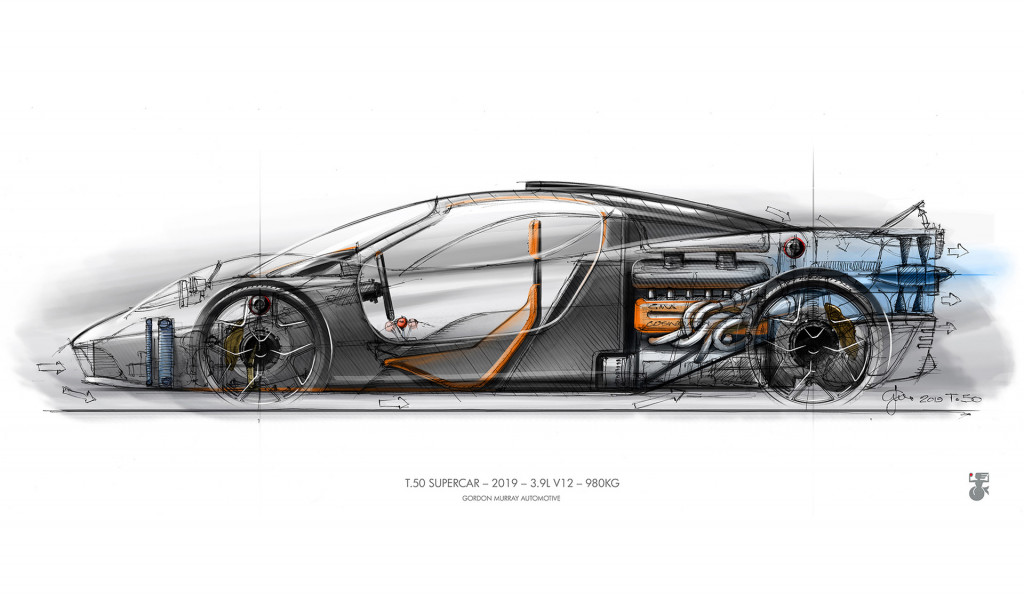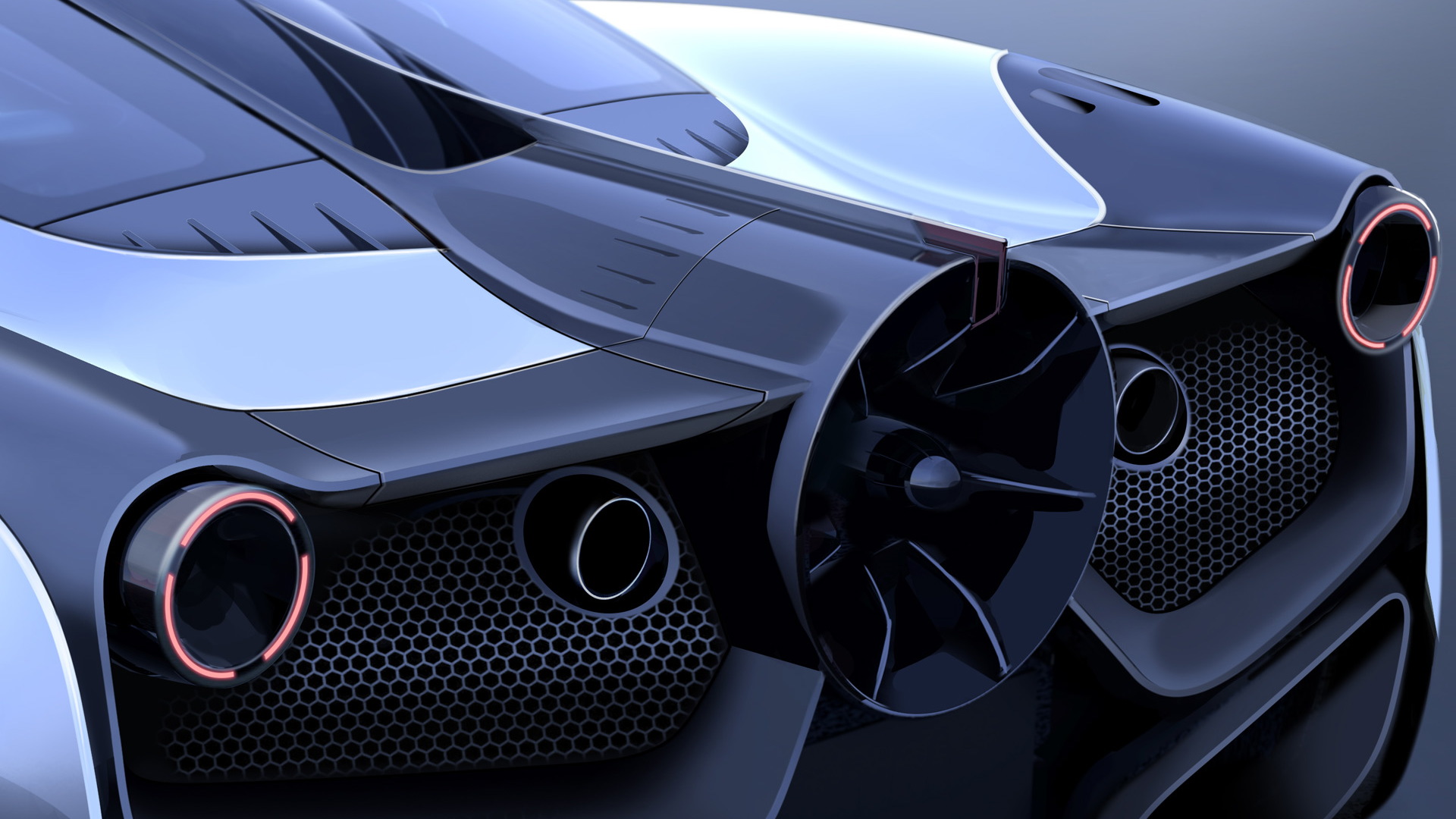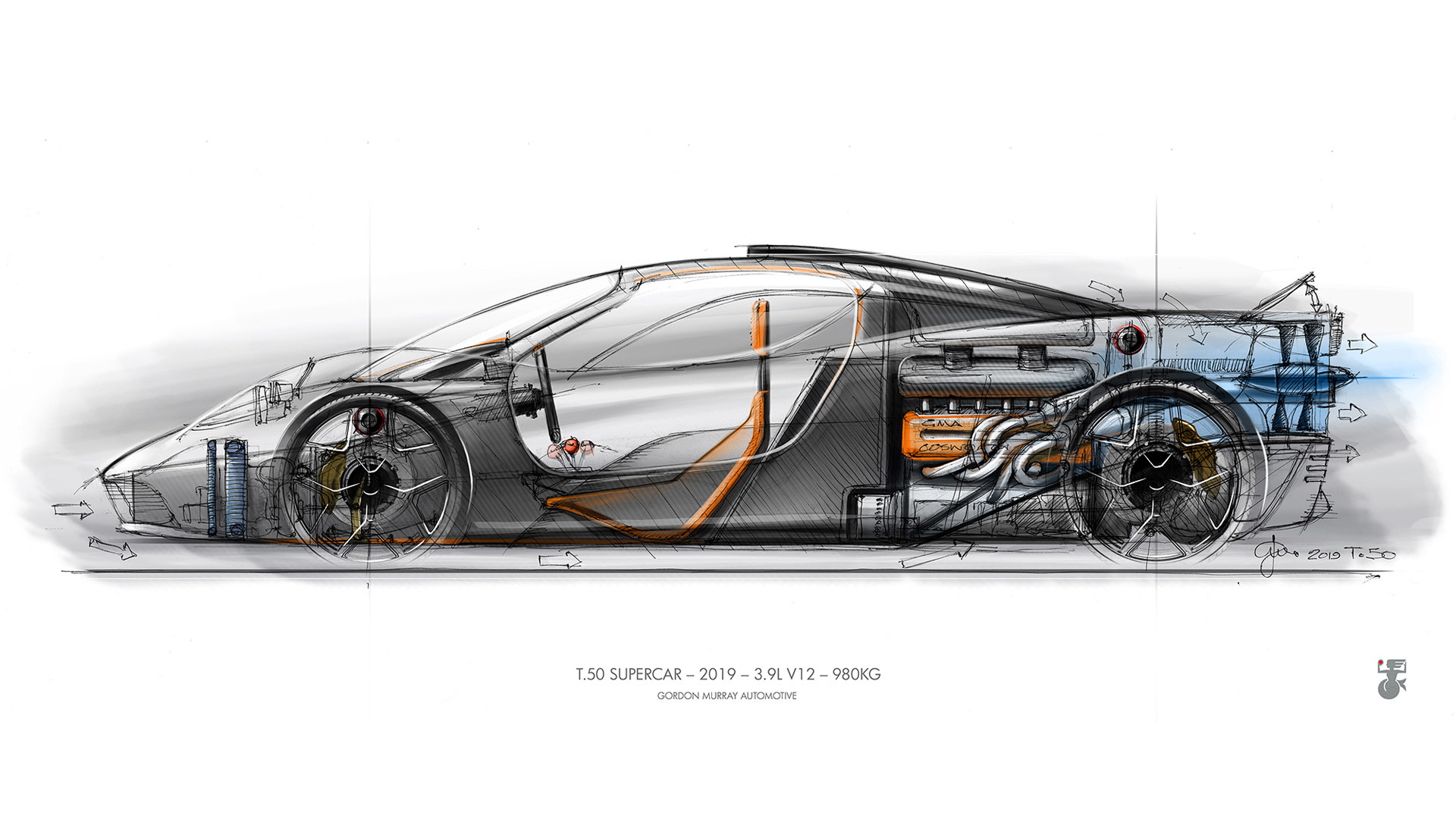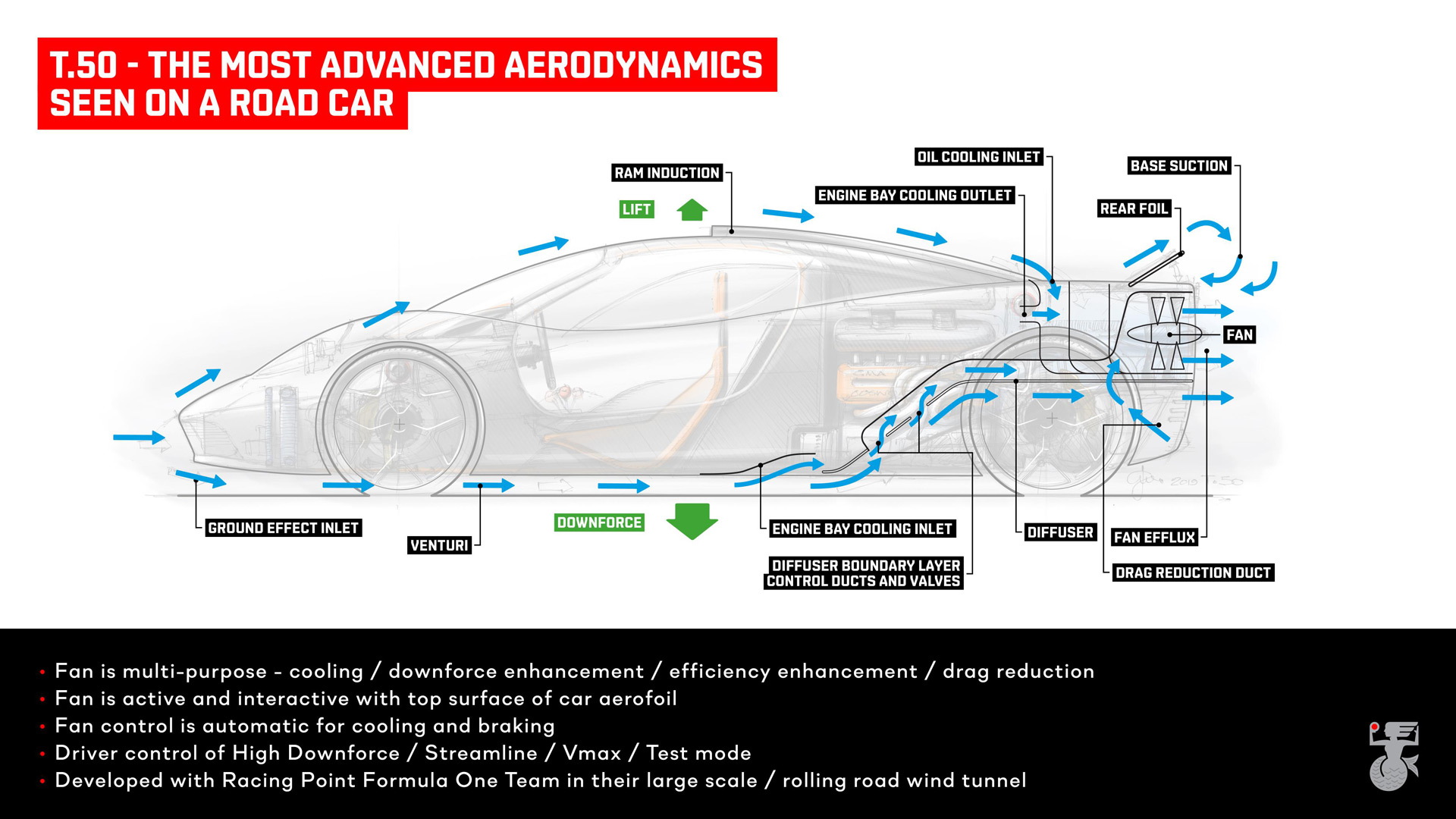Gordon Murray has designed many things, including multiple championship-winning Formula One cars and the iconic McLaren F1 supercar. He's now working on a new car, one he labels the last and greatest "analog" supercar.
Called the T50, the new car is due in early 2022 as the first model from newly minted car brand Gordon Murray Automotive, and a major milestone was reached over the weekend when its Cosworth-designed V-12 was fired up for the first time.
As this was the initial fire up, the engine speed was capped at 1,500 rpm. Murray has said the completed engine will rev to 12,100 rpm, or higher than in any previous road car. The figure is also about 1,000 rpm higher than what Aston Martin and Mercedes-AMG are promising for their respective Valkyrie and One hypercars.
We also know the engine will feature a 3.9-liter displacement, a narrow 65-degree cylinder bank, dry sump lubrication, and a peak output of 653 horsepower and 344 pound-feet of torque. Drive in the T50 will be to the rear wheels only, via a 6-speed manual transmission developed by Xtrac.
The engine will also feature a mild-hybrid setup, in this case a 48-volt motor-generator that can add about 50 hp temporarily. It means peak output in the T50 can be boosted to about 700 hp, thanks also to a ram induction system.

Teaser for GMA T50 supercar due in 2022
Other impressive features of the car will be a three-seat layout, a downforce-generating rear fan, and lightweight construction. We're talking a weight of just 2,160 pounds, or about a third less than most supercars on the market. This is helped in part by the lightweight construction of the engine, which weighs a relatively lithe 392 pounds thanks in part to the use of titanium for some components.
As for the downforce-generating fan, this is the same technology Murray designed for the famous Brabham BT46B “fan car” that Niki Lauda drove to victory in the 1978 Formula One Swedish Grand Prix. In the T50, a fan 15.75 inches in diameter will sit out the back and literally suck air from below the car in order to create an area of low pressure and in turn create downforce. The advantage is huge downforce with the huge, drag-causing wings performance cars traditionally rely on.
Sadly, just 100 T50s will be built for road use (25 track versions are still a possibility), each of them with a price tag of $2.5 million. The good news is that the T50 is just the first of a series of performance-oriented cars planned by Gordon Murray Automotive.






